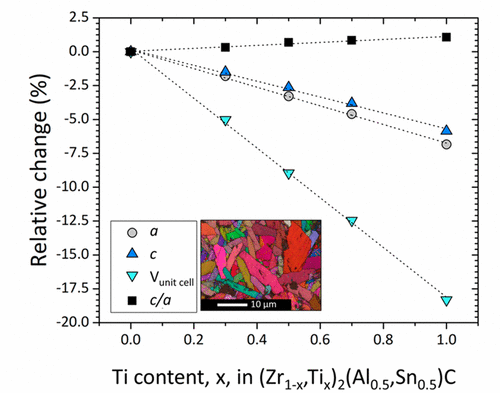
-
- au
Ici vous trouverez le papier de Thierry Ouisse
"Quasi phase-pure (>98 wt %) MAX phase solid solution ceramics with the (Zr,Ti)2(Al0.5,Sn0.5)C stoichiometry and variable Zr/Ti ratios were synthesized by both reactive hot pressing and pressureless sintering of ZrH2, TiH2, Al, Sn, and C powder mixtures. The influence of the different processing parameters, such as applied pressure and sintering atmosphere, on phase purity and microstructure of the produced ceramics was investigated. The addition of Sn to the (Zr,Ti)2AlC system was the key to achieve phase purity. Its effect on the crystal structure of a 211-type MAX phase was assessed by calculating the distortions of the octahedral M6C and trigonal M6A prisms due to steric effects. The M6A prismatic distortion values were found to be smaller in Sn-containing double solid solutions than in the (Zr,Ti)2AlC MAX phases. The coefficients of thermal expansion along the ⟨a⟩ and ⟨c⟩ directions were measured by means of Rietveld refinement of high-temperature synchrotron X-ray diffraction data of (Zr1–x,Tix)2(Al0.5,Sn0.5)C MAX phase solid solutions with x = 0, 0.3, 0.7, and 1. The thermal expansion coefficient data of the Ti2(Al0.5,Sn0.5)C solid solution were compared with those of the Ti2AlC and Ti2SnC ternary compounds. The thermal expansion anisotropy increased in the (Zr,Ti)2(Al0.5,Sn0.5)C double solid solution MAX phases as compared to the Zr2(Al0.5,Sn0.5)C and Ti2(Al0.5,Sn0.5)C end-members."


